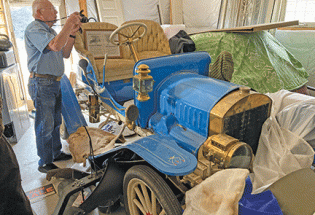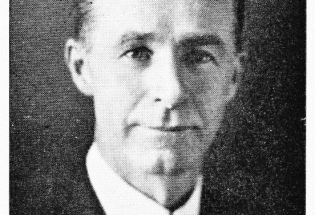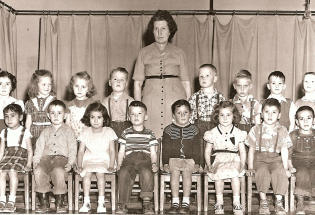Dispute over site caused early school district to split
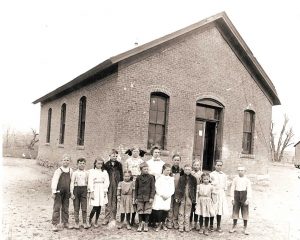
Old Berthoud School” located on the Little Thompson river bottom was constructed in 1883. The original school district split into two separate districts the year prior when a dispute arose over the location where a new school building should be constructed.
Photo courtesy of the Berthoud Historical Society
Tales of the Little Thompson
By Mark French
The Surveyor
The first school district to be organized in the Little Thompson Valley was Larimer County District No. 13. The district, originally known as “Little Thompson” was formed in 1874 and encompassed a large area that extended a few miles in each direction from the homestead of Lewis Cross on the Little Thompson river bottom. (The Cross homestead was located one mile directly south of present-day Berthoud.) More school districts were formed in the area over the next few years, including Blore (1877), Lone Tree (1880), Sunnyside (1880), Red Rock (1882) and Whipple (1883).
Dist. No. 13 came into being on Oct. 15, 1874, when local residents paid a $5 fee to the Larimer County School superintendent, Clark Boughton, for “Sitting <sic> off new School District No. 13.” The first year the three-person school board was manned by Cross, Henry Krueger and George Cronk. Seventeen students attended classes in a small log cabin on the Cross homestead that served as the community’s school, church and meeting place. The identity of the school’s first teacher is unknown.
When Dist. No. 13 was organized in 1874, nearly all the residents of the Little Thompson Valley lived on homesteads along the river bottom where the soil was fertile and water for domestic and agricultural use was in close proximity. As a result, the district built its school on the river bottom homestead of Cross, where one of the main wagon roads that traversed the valley crossed the Little Thompson River. When additional homesteaders arrived in the late 1870s and early 1880s, the land left for homesteading was located on the bluffs above the river bottom, so the new arrivals’ children traveled greater distances to get to the school on the river bottom.
In 1877 the Colorado Central Railroad laid its tracks through the Little Thompson Valley and along the eastern boundary of the Cross homestead. Two years earlier Cross had submitted an application for a post office at a cluster of buildings on his homestead, informally known as “Little Thompson,” and he was appointed postmaster. When the track was laid past Little Thompson in 1877, railroad officials gave the fledgling settlement the name “Berthoud” in honor of Capt. Edward L. Berthoud, the engineer who had surveyed the route of the railroad.
After that time, Dist. No. 13 became known as “Berthoud District No. 13.”
In the early 1880s it was apparent that Dist. No. 13 needed a larger, modern school building. A dispute arose when residents living on the river bottom let it be known the new school should be built on the old school site. Those living on the bluff north of the river bottom maintained the new school building should instead be located in their neighborhood.
As a result, the residents of the river bottom seceded from Dist. No. 13 to create a new district that was identified as Dist. No. 22. What remained of the original district, several sections located on the bluff north of the river bottom, retained the identity of Dist. No. 13. Both districts proceeded to build new school buildings.
In the winter of 1883, Dist. No. 22 constructed a new brick school building on the Little Thompson river bottom. After the town of Berthoud was moved from the river bottom to its present-day site in the winter of 1883-84, what was left of the settlement and the new school became known as “Old Berthoud.”
That same year, Dist. No. 13 built a new, frame school building at the southwest corner of the intersection of present-day Larimer County Road 10E and old Highway 287 (current site of B&J Storage). For reasons presently unknown, the new building was named the “Mars Hill School.”
After Berthoud was moved from the river bottom to its current location in the winter of 1883-84, children living north of Thompson Street (present-day Mountain Avenue) walked a mile north to attend classes at the Mars Hill School, while children living south of Thompson Street walked a mile south to attend classes at Old Berthoud.
When a school was finally built in the town of Berthoud in 1887, the Mars Hill building was moved to the present-day Campion area where it was used by Summit School Dist. No. 54. After that time, children living in the country north of Berthoud walked into Berthoud to attend classes at the school in town. The school, razed when the school that once stood in Fickel Park was built in 1894, was located on the east side of the 500 block of Sixth Street.
- September, 03 2014
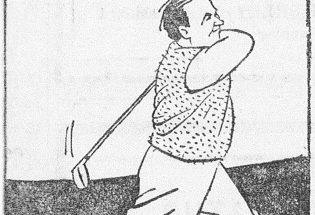
Rattlesnakes were main hazard at Bert...
Tales of the Little Thompson By Mark French On Jan. 19, 1933, readers of The...
- January, 20 2022
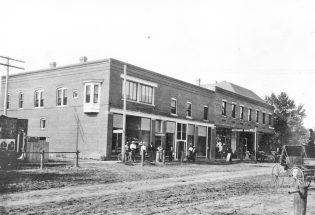
William Lyon partnered with George Ke...
William Lyon and George Kee were responsible for building the first two-story, red brick business...
- July, 12 2019
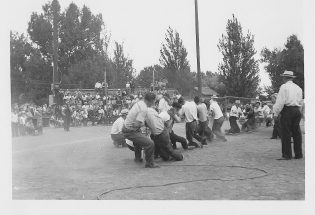
First night baseball game in Berthoud...
Photo courtesy of the Berthoud Bulletin Collection, Berthoud Historical Society - A photograph of a...
- June, 06 2014

Growing up in Berthoud Exhibit to open
By May Soricelli The Surveyor The Berthoud Historical Society proudly presents its largest and most...
- June, 16 2022
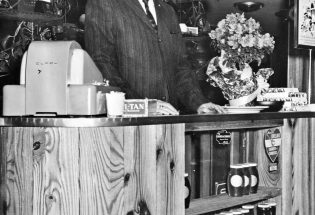
Colonel Harland Sanders visited Berth...
Photo courtesy of Mark Williams Collection, Berthoud Historical Society - Stan...
- February, 04 2022
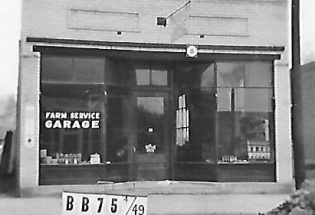
Massachusetts Avenue building is amon...
In a series of local history articles that appeared in the Berthoud newspaper in 1952,...
- Asher Architects builds projects from...

- More than a market, a family legacy
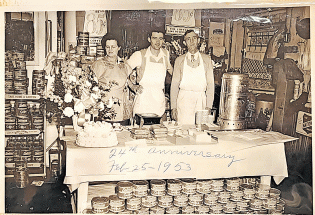
- Colorado business confidence is impro...

- Unified basketball comes to Turner Mi...

- Thompson School District reviews bond...

- Roy Tripi to become principal of BHS ...

- Community Calendar & Legal Notice...

- Community Calendar & Legal Notice...

- Community Calendar & Legal Notice...


Unified basketball comes to Turner Middle School
Community News
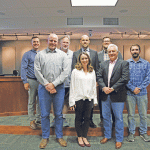
Mike Grace says goodbye as Brett Wing joins town board
Community News
POLICEBLOTTER
Community News
Northern Water sets C-BT quota at 70% for 2024
Community News

Emotions run high during Revere Property hearing
Community News
Snowpack at 119% above normal
Community News

Karspeck to serve third term as Berthoud mayor
Community News
COMMUNITY CALENDAR:
Community Calendar – add an event
Homestead Fine Art Gallery First Fridays OPEN HOUSE
03 May 4:00 PM - 7:00 PM
Homestead Fine Art Gallery First Fridays OPEN HOUSE
07 Jun 4:00 PM - 7:00 PM
Homestead Fine Art Gallery First Fridays OPEN HOUSE
05 Jul 4:00 PM - 7:00 PM
Homestead Fine Art Gallery First Fridays OPEN HOUSE
02 Aug 4:00 PM - 7:00 PM
Homestead Fine Art Gallery First Fridays OPEN HOUSE
06 Sep 4:00 PM - 7:00 PM
Homestead Fine Art Gallery First Fridays OPEN HOUSE
04 Oct 4:00 PM - 7:00 PM








